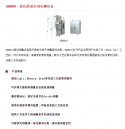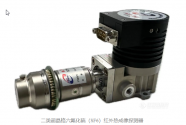i don't believe Havok said 20 DUV, he said 20 DUV/DUVi total. I think we are far from knowing how many are actually getting put into production this year, but it's safe to say the production is ramping up now that Guowang, U-Precision are up supplying a lot more to SMEE.
If I look at what Tinrobert has written, you would need 10 Immersion DUV for monthly capacity of 50K wafers.
This is with 300mm wafers @ 28nm with a single pattern.
That sounds like the minimum size you would want for a 300mm fab. But ideally, it looks like a capacity of 100K is optimal.
---
As for Dry DUV, my understanding is that ASML is still selling these without restriction.
So there isn't an urgent need to replace these.
Presumably you would also need 10 machines for a nameplate capacity of 50K wafers, but of course, this is at a larger node.
---
And given that ASML operates with an average gross profit margin of around 100% (selling for double what it costs), there is a lot of space for a Chinese competitor. Even if the initial Chinese equipment from SMEE is worse and more expensive, there's still enough margin to be profitable.



